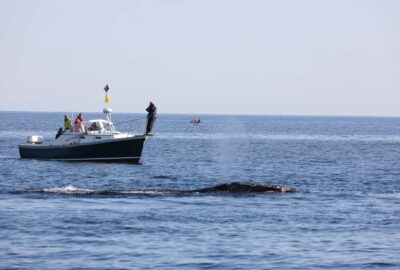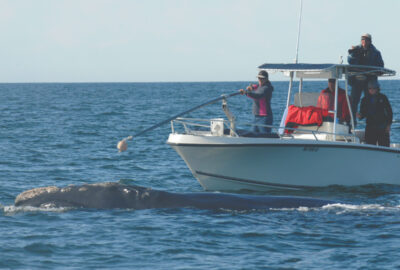Cruising to the Keys
Tracking the False Albacore Seasonal Migration
By New England Aquarium on Friday, September 01, 2023

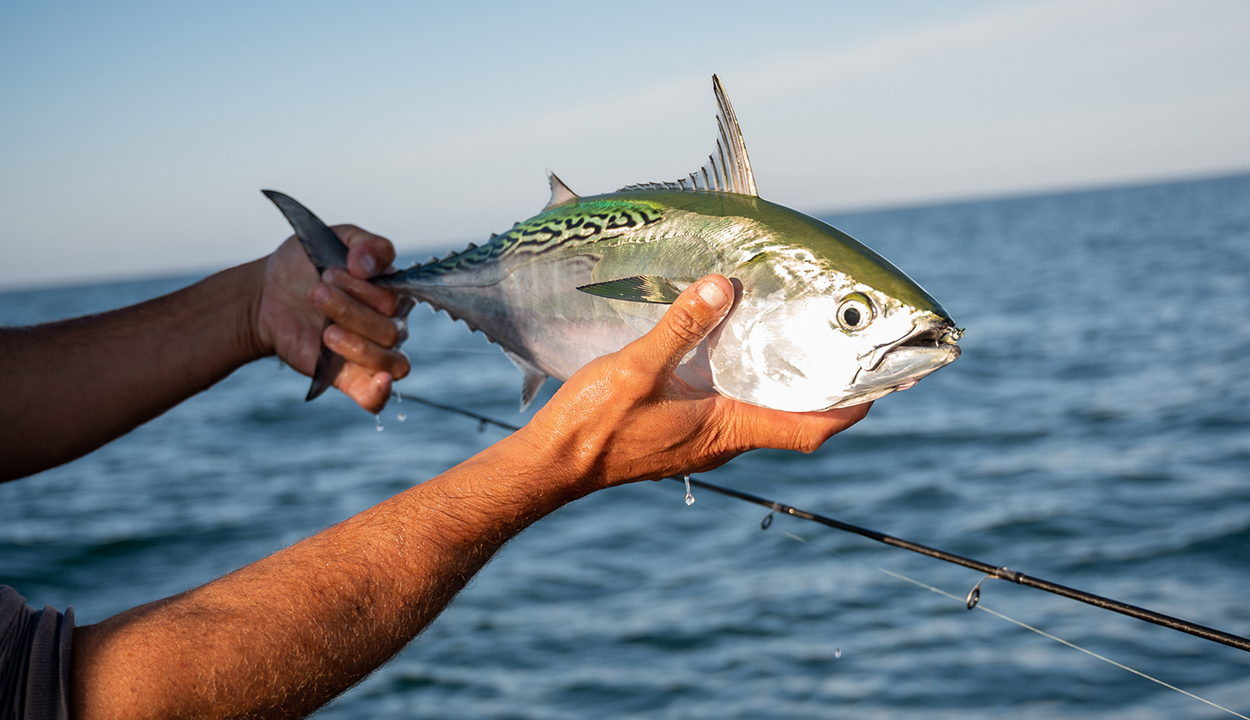
By Edward Kim, Caroline Collatos, and Jeff Kneebone
Now that it’s well into 2023, our tagged false albacore have had plenty of time to swim around after leaving New England last fall. If you’re just now tuning in to our research on false albacore, take a look at our past update to catch up with the tagging we accomplished in Nantucket Sound in partnership with the American Saltwater Guides Association (ASGA) to examine the residency and movements of these fish in our local waters. But what have our fish done since then, and why should we care?
Despite a large coast-wide recreational fishery and directed commercial fisheries, no management plan is currently in place for false albacore in part because their population structure is poorly understood. As a highly migratory species, there are questions as to whether the fish that we catch here in New England could be part of the same population as those caught in states much further to the south, or if they are completely different populations altogether. As a result, there is a need for accurate information on their migration patterns and habitat use outside of Nantucket Sound so that the scope of any future regulations can be defined. While another ASGA partner is currently investigating this with genetics, we can also use acoustic telemetry to help answer this question by following our tagged albies.
How exactly do we track these fish once they leave our array of receivers in Nantucket Sound?
Our tags are capable of being detected by receivers owned and deployed along the coast by other scientists, and the resulting data can be obtained through our communal participation in the Mid-Atlantic Acoustic Telemetry Observation System (MATOS). MATOS is an organization that compiles and shares acoustic telemetry data from participating institutions all along the US East Coast. Since our false albacore tags have battery lives approaching one year, we still have the potential to learn more about the timing and range of their dispersal after leaving our waters, but only if they swim by acoustic receivers along their journey.
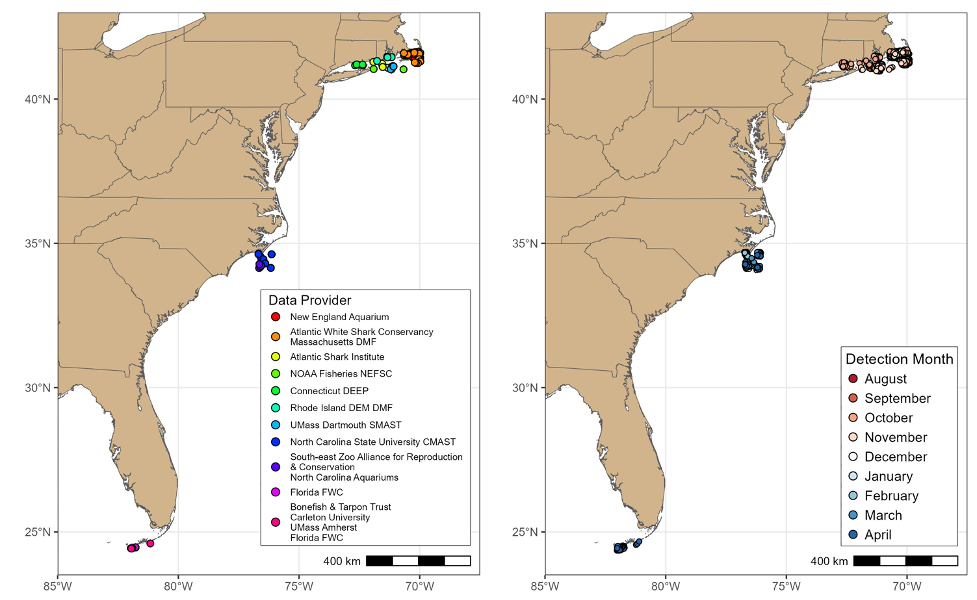
To our surprise, other researchers outside of Nantucket Sound have shared detection data from 34 of the 63 tagged false albacore to date, including two tags that we had not previously received detection data from. These fish ranged from our neighboring waters of Rhode Island, Long Island Sound, and offshore southern New England in the fall all the way down to Florida. Of these, 21 were detected by receivers in North Carolina between November 2022 and April 2023, and five were detected in the Florida Keys between March and April 2023. Three fish were actually detected in both locations, taking as little as 23 days to travel from North Carolina to Florida!
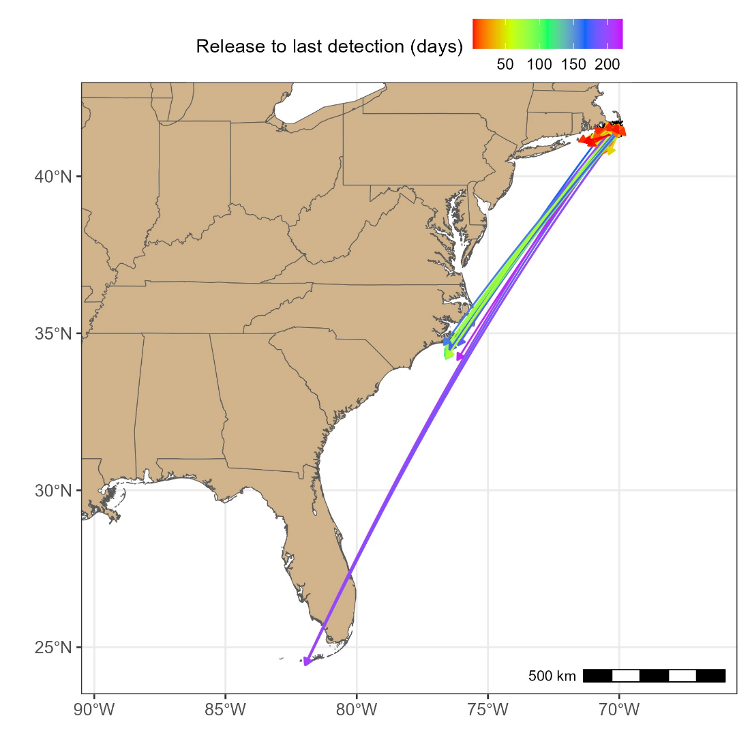
Overall, the data from our tagged fish indicate that false albacore undergo extensive seasonal movements spanning the entire coast and provide evidence of a single connected population. While preliminary, this information aligns with ASGA’s work that points to one genetic group from Massachusetts to North Carolina.
False albacore season has just arrived, and we’re in the process of gearing up for round two of tagging later this month. The tags we put out this fall will sport slightly longer battery lives to give us a more complete, continuous picture of where these fish go through at least a full year after release. In the meantime, the tags deployed last year are still pinging away and hopefully revealing more about the species’ migration. Here in New England, our acoustic receivers are waiting and listening to find out if any tagged fish find their way back. To learn more and tune in to additional updates on false albacore work, check out the ASGA’s Albie Project website.
Special thanks to the various owners of the arrays who provided data and made this work possible: the Atlantic White Shark Conservancy and Massachusetts Division of Marine Fisheries; the Atlantic Shark Institute; NOAA Fisheries Northeast Fisheries Science Center; Connecticut Department of Energy & Environmental Protection; Rhode Island Department of Environmental Management Division of Marine Fisheries; University of Massachusetts Dartmouth – School for Marine Science & Technology; the Applied Ecology Lab at North Carolina State University – Center for Marine Sciences & Technology; the South-east Zoo Alliance for Reproduction & Conservation and North Carolina Aquariums; Florida Fish and Wildlife Commission; and the Bonefish & Tarpon Trust, Carleton University, University of Massachusetts Amherst, and Florida Fish and Wildlife Commission.

